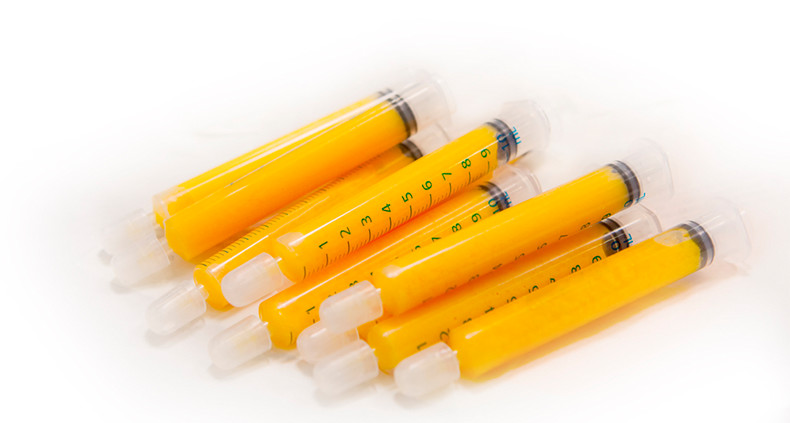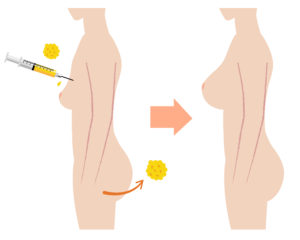Fat Transfer Sydney
Your complete guide and quick links to everything you want to know about Fat Transfer in Sydney!
What Is Fat Transfer?
Fat Transfer, also known as Fat Grafting, is a long-lasting and natural method of filling face and body areas that have lost volume or are simply in need of enhancement.
Being your own tissue, fat delivers soft, supple and natural-looking results without the risk of an allergic reaction that is always a potential risk with other fillers.
The Benefits of Fat Transfer
- Soft, natural looking results.
- No risk of an allergic reaction to your own tissue.
- Long-lasting, if not permanent, results.
- Dual benefits: fat is removed from a part of your body where you don’t want it, and then transferred to where you wish to add volume.
- An increasingly popular procedure for breast augmentation for those who don’t wish to have implants.
Popular Uses of Fat Transfer
- Filling Body Defects caused by age, trauma or excessive liposuction.
- Cheek Augmentation
- Chin Augmentation
- Breast Augmentation for those patients who do not want implants.
- Correction of Breast Deformities or Asymmetry – either naturally occurring or after implants.
- Hand Rejuvenation to replace volume lost on the back of the hands as a result of ageing.
How Is Fat Transfer Performed?
- In the best interests of patient comfort and safety, we perform all Fat Transfers in a Licensed Hospital under either General or Twilight Anaesthesia depending on the extent of the procedure.

- After first infiltrating a Tumescent Solution into the donor area, fat is removed though tiny incisions using low pressure suction to minimise the risk of injuring the fat cells.

- The extracted fat is then processed to remove unwanted fluids and oils.

- The processed fat, rich in Stem Cells, is then loaded into syringes ready for injection.
- Finally, each tiny donor site incision is closed with a fine suture.
- Hospital stay is not necessary and you can go home shortly after the procedure. However, you cannot go home alone. You must be accompanied by a responsible adult.
- Large volume Fat Transfers have less chances of the fat cells surviving owing to the greater difficulty of the recipient site keeping the transplanted fat cells alive. Accordingly, if you have a large volume defect to be filled, you may need to consider serial transfers of smaller fat volumes rather than one large transfer in order to maximise the chances of the transferred fat cells surviving.
Watch Our ‘Fat Transfer’ Animation Video
Breast Augmentation By Fat Transfer

Breast Augmentation by Fat Transfer is becoming an increasingly popular alternative for those women wishing to enhance the size of their breasts without the use of implants.
Fat Transfer Breast Augmentation is considered a relatively safe procedure that has been practised for many years.
Over those years, the technical aspects of Fat Transfers have been continuously improved with the aim of maximising the chances of fat cell survival.
It would be fair to say that the current techniques of Fat Transfer have now reached a point where the procedure can be considered a worthwhile alternative for both primary Breast Augmentation as well as a treatment for various breast asymmetries and deformities.
Breast conditions suitable for Fat Transfer include:
- Breast Augmentation in women who do not want breast implants, provided that they:
- would be happy with only a moderate increase in breast size of 1-1½ cups; and
- have adequate fat deposits for fat harvesting; and
- are realistic about the outcomes of Fat Transfer and the possibility that more than one Fat Transfer may be required to eventually achieve their desired cup size.
- Improving cleavage by reducing the space between the breasts.
- Filling the stretched and loose skin in women who have had their breast implants removed.
- Correcting breast asymmetries – be they naturally-occurring or as a result of implants.
- Correcting shape deformities – be they naturally-occurring or as a result of implants.
- Correcting ‘double bubble’ deformity after breast implant surgery.
How is Fat Transfer Breast Augmentation Done?

1. Harvesting of fat from one or more donor areas such as the abdomen, thighs, hips and flanks
Fat is removed using traditional tumescent liposuction techniques under low suction pressure to avoid damaging the fat cells. We do not recommend that harvesting of the fat be carried out by Vaser Liposuction as the cells could easily be damaged by the Vaser’s ultrasound energy which would then lead to less fat cell survival.
2. Processing the fat
The fat collected then needs to be purified to remove unwanted oils, tissue fluids and any traces of blood before it can be injected. This can be achieved by various means such as washing or ‘spinning’ the fat in a centrifuge. Whatever the process, this step then produces a collection of ‘pure’ fat cells for injection.
3. Injection of the Fat
The purified fat is then injected into each breast in a systematic pattern to achieve the desired result. Very importantly, the fat cells need to be deposited as ‘lines’ through the breast tissue and NOT in large clumps which would not only lessen their chances of survival, but could cause contour deformities as well as Fat Necrosis. Fat Necrosis occurs when the fat cells fail to survive and the initial correction is lost.
Recovery After Fat Transfer Breast Augmentation
- Pain and discomfort are only mild after Fat Transfer and should be easily controlled by the pain-relievers your doctor will prescribe.
- Rest at home during the first 24 hours. Do not exert yourself and avoid strenuous activities or exercise during the first 2 weeks after surgery.
- Expect some bruising and swelling in the donor areas but this will settle over the next 2 weeks.
- Continue to wear your Post-operative Compression Garment for 6 weeks to give your donor areas the best chances of slimming down.
‘Pros and Cons’ of Fat Transfer Breast Augmentation
The Pros:
- Breasts that both look and feel ‘natural’.
- Easy acceptance by your body. Using you own body fat means that your body will accept the fat and not reject it or react to it in adverse ways as can happen with breast implants.
- No Risk of ‘Capsular Contracture’ As every inserted breast implant is ‘foreign’ to the body, the body forms a fibrous envelope around it known as a ‘capsule’. This fibrous capsule is not harmful but, in some women, this capsule can shrink like ‘shrink wrap’ and compress the implant enough to make the breast feel firm and look out of shape. This complication is known as Capsular Contracture and it is the commonest cause of repeat surgery after breast implants. In contrast, ‘capsules’ DO NOT form around transferred fat.
- It avoids many of the other potential complications of breast implants. Although most breast augmentations with implants proceed uneventfully and deliver high satisfaction rates for patients, potential complications do exist that could require repeat surgery. Fat Transfer Breast Augmentation avoids such issues from implants.
- Fat Transfer Breast Augmentation is generally considered long-lasting or permanent. As the fat transferred is your own tissue, it will not be rejected. A variable percentage will always fail to survive which could then require further transfer(s) to reach your desired cup size. However, once you reach your final size, no further fat transfers should be necessary. In contrast, breast implants are not life-long devices and most women with implants will need revision surgery at some future point in time.
- Enlarge your breasts whilst slimming the donor areas! Fat for breast augmentation can be harvested from such areas as the abdomen, thighs, hips and buttocks. By removing fat from these areas, patients can enjoy the dual benefit of boosting their breast size and at the same time slimming down other areas!
- No visible scars on the breasts. Only the donor sites will have one or more small incisions the scars of which will fade over time.
The Cons:
- Donor areas for Fat Transfer must contain enough fat. Typically, the amount of fat that becomes finally available for transfer after it has been processed is only around 50% of the amount harvested.
- The increase in breast size is limited. Breast Augmentation by Fat Transfer is limited to around 1 cup size for every 250-400cc of fat injected. If a greater breast size is desired, more than one Fat Transfer session will be required.
Potential Risks & Complications of Fat Transfers
Fat Transfers are generally considered safe procedures but as with any surgery, potential risks and complications do exist.
The first three risks listed below are preventable by avoiding large volume Fat Transfers.
Specific to Fat Transfers:
- Lignocaine toxicity if large volumes of Tumescent Solution containing the local anaesthetic, Lignocaine, are injected.
- ‘Volume Overload’ caused by injecting excessive volumes of Tumescent Solution.
- Shock from excessive fluid loss due to large volume fat extractions.
- Contour irregularities in either the donor or recipient areas.
- Asymmetry if paired body areas receive a Fat Transfer.
- Wide or thickened scars (hypertrophic or keloid) could occur if you are prone to them and pigmented scars are more likely in those with brown or Asian skin.
- Numbness or changes in skin sensation.
- Slow or poor healing. More likely in smokers and diabetics.
- Wound infection requiring topical wound care and antibiotics.
- Seroma (excess fluid accumulation under the skin) requiring one or more aspirations.
- Infection of the fatty tissues.
- Inadvertent injury during harvesting by liposuction to deeper structures such as nerves, blood vessels, muscles, lungs and abdominal organs.
- Fat Embolism as a result of inadvertent injection of fat directly into a blood vessel.
General Risks:
- Allergic reaction to medications, sutures, dressings, or antiseptic solutions.
- Deep Venous Thrombosis (DVT) and its potential to cause life-threatening Pulmonary Embolism. To reduce the risk of DVT, Calf Massagers can be applied for the entire duration of your surgery to prevent the blood in your leg veins from pooling and clotting.
- Adverse Reactions to Anaesthesia or Medication: The safety of anaesthesia nowadays in Australia is well established. Nevertheless, potential risks exist with all anaesthesia and unexpected reactions can occur. These may include nausea, vomiting, and allergic reactions ranging from minor to severe. Respiratory failure, heart failure, heart attack and stroke are rare but documented risks of any general anaesthesia.
The Cost of Fat Transfer

-
Fat Transfer Sydney
Unfortunately, it is impossible to give you even an approximate total cost for your Fat Transfer until you’ve had a consultation because our Surgeon first needs to determine how long the procedure will take. This, in turn, will determine the Operating Theatre Fee and Anaesthetist Fee as both are based on the duration of your procedure.
The following are the individual costs that will make up your quotation:
- Surgical Fee: This will depend on the amount of liposuction required to harvest the donor fat, process the extracted fat, and then inject it.
- Hospital Fee: Hospitals differ in their hourly rates for Operating Theatres. Our surgeon will advise you of your approximate hospital costs once it has been determined how long your procedure will take.
- Anaesthetist Fee: This will basically depend on the duration of your procedure. Anaesthetic Fees are generally around $880/hour.
- Post-Operative Compression Garment
